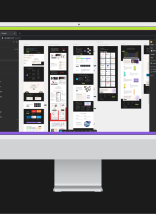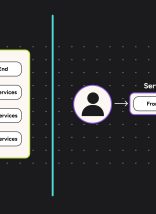Whether technology is your company’s core business or not, your customers have made tech front and center. Your customers are empowered with tech and they are taking their expectations from one place to the next. Thanks to innovators like Amazon, we can order detergent at the push of a button and command a pizza delivery from our personal concierge bot. Customers who are accustomed to these conveniences do not have patience for disconnected companies. If you want your company to compete, you need to become technology-centered—and there’s no more important role for this than your CIO.
Bridging the Tech Gap
There used to be a separation between the CIO, the business, and the customer. Today, the accessibility of sophisticated research tools coupled with the exponential expansion of data that consumers have access to has bridged that gap. Customers now have enough intel to fill the Library of Congress 100 times over at their fingertips. They are even building their own tech stacks. A tech stack used to only refer to the arsenal of databases, programming languages and frameworks that companies use to build their applications. Nowadays, any organization related to Marketing, Sales, Support Services, or Customer Engagement will have its own specialized tech stack. Extend that even further, to list the myriad of personal productivity, messaging, entertainment, and information sharing technologies that your customers have to choose from, and voila, the consumer tech stack is born.
As a result, the CIO can no longer operate from the inside out — they must meet and interact with their customers in their world. The CIO is now challenged with moving faster to keep up with the broader business because speed is the deciding factor in the new customer success operating model.
Moving at Your Customer’s Speed
Why is speed uniquely important to the CIO? There’s no other role in the organization that has operational engagement across multiple levels. The CIO role used to just focus on IT strategy, an area that touches every organization and department. Meeting the company’s objectives and goals for the CIO meant building and maintaining a robust infrastructure of internal IT systems. But this is no longer enough. The technology that customers use to interact with companies changes regularly, and a company’s internal technology must be able to adapt to those changes if they are to stay in touch with their customers.
While the demand for progressive pioneers runs throughout the business operational ladder, the customer-focused outlook is new to the CIO, who has traditionally been removed from the outfacing spotlight. For example, millennials now have tremendous buying power and can injure a company’s P&L if organizational leaders don’t prioritize an understanding of their emotions and motivations (which are now far more complex and span multiple touch points). Customer experience and customer engagement are now tied to all areas of the organization from initial contact, to billing, to order fulfillment, to call center support, and shipping.
Becoming a Chief Digital Officer
So how does the CIO influence these touchpoints? By taking a strategic look at what their industry is doing and delivering in a way that continuously adds to the customer experience. This lets the CIO guide initiatives that leverage technology to transform their organization into a well-oiled, customer-obsessed machine. These new initiatives can no longer be planned once on an annual basis. They have to be built, experienced, learned, and tested. To lead the charge, the CIO needs to think like a digital disruptor. In a sense, the CIO’s new title is Chief Digital Officer.
CIOs need to build a new customer-focused vision and evolve their organizations to a more agile and customer-obsessed operating model. The decisions made at the speed of the customer must be linked to outcomes by measuring and analyzing customer data. Customers might have buying and investing cycles that don’t fit into the fiscal calendar box. Refine what the journey towards customer obsession looks like for your organization and make an honest assessment of where you are today. On the practical side, find the internal organizations that you can partner with to gain quick wins, while you’re getting the strategic layers in place. For example, your marketing department may be open to sharing the results of a new data visualization tool with the product management team that is responsible for new releases. Leverage the technology to build stronger customer loyalty systems and you’ll pave the way for a shift that will direct your company’s future towards the downstream current of the new digital movement.
What are your thoughts on the CIO’s role? Has it been evolving and will the trend continue? Let me know in the comments section below.






